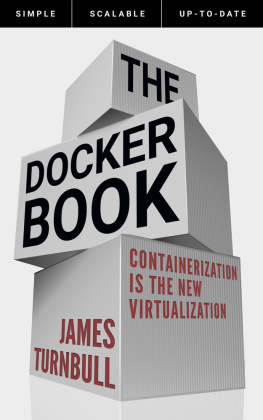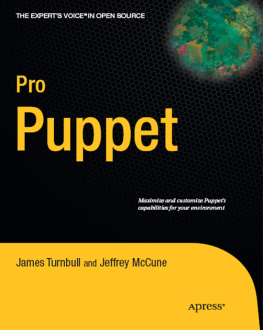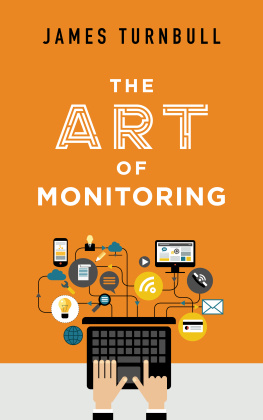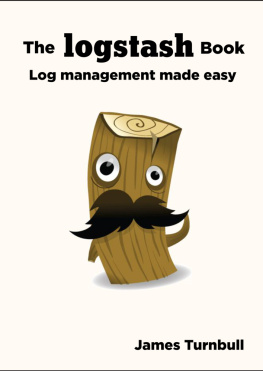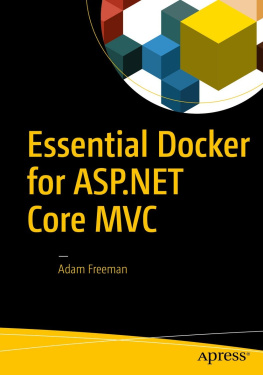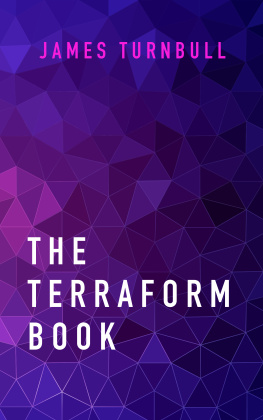James Turnbull - The Docker Book
Here you can read online James Turnbull - The Docker Book full text of the book (entire story) in english for free. Download pdf and epub, get meaning, cover and reviews about this ebook. year: 2014, genre: Home and family. Description of the work, (preface) as well as reviews are available. Best literature library LitArk.com created for fans of good reading and offers a wide selection of genres:
Romance novel
Science fiction
Adventure
Detective
Science
History
Home and family
Prose
Art
Politics
Computer
Non-fiction
Religion
Business
Children
Humor
Choose a favorite category and find really read worthwhile books. Enjoy immersion in the world of imagination, feel the emotions of the characters or learn something new for yourself, make an fascinating discovery.
- Book:The Docker Book
- Author:
- Genre:
- Year:2014
- Rating:3 / 5
- Favourites:Add to favourites
- Your mark:
- 60
- 1
- 2
- 3
- 4
- 5
The Docker Book: summary, description and annotation
We offer to read an annotation, description, summary or preface (depends on what the author of the book "The Docker Book" wrote himself). If you haven't found the necessary information about the book — write in the comments, we will try to find it.
James Turnbull: author's other books
Who wrote The Docker Book? Find out the surname, the name of the author of the book and a list of all author's works by series.
The Docker Book — read online for free the complete book (whole text) full work
Below is the text of the book, divided by pages. System saving the place of the last page read, allows you to conveniently read the book "The Docker Book" online for free, without having to search again every time where you left off. Put a bookmark, and you can go to the page where you finished reading at any time.
Font size:
Interval:
Bookmark:

James Turnbull
The Docker Book is for developers, sysadmins, and DevOps-minded folks who want to implement Docker and container-based virtualization.
There is an expectation that the reader has basic Linux/Unix skills and is familiar with the command line, editing files, installing packages, managing services, and basic networking.
This books focuses on Docker Community Edition version v17.07.0-ce and later. It is not generally backwards-compatible with earlier releases. Indeed, it is recommended that for production purposes you use Docker version v17.07.0-ce or later.
In March 2017 Docker re-versioned and renamed their product lines. The Docker Engine version went from Docker 1.13.1 to 17.03.0. The product was renamed to become the Docker Community Edition or Docker CE. When we refer to Docker in this book we're generally referencing the Docker Community Edition.
- My partner and best friend, Ruth Brown, who continues to humor me despite my continuing to write books.
- The team at Docker Inc., for developing Docker and helping out during the writing of the book.
- The folks in the #docker channel and the Docker mailing list.
- Royce Gilbert for not only creating the amazing technical illustrations, but also the cover.
- Abhinav Ajgaonkar for his Node.js and Express example application.
- The technical review team for keeping me honest and pointing out all the stupid mistakes.
- Robert P. J. Day - who provided amazingly detailed errata for the book after release.
Images on pages 38, 45, 48, courtesy of Docker, Inc.
Docker is a registered trademark of Docker, Inc.
Scott Collier is a Senior Principal System Engineer for Red Hats Systems Design and Engineering team. This team identifies and works on high-value solution stacks based on input from Sales, Marketing, and Engineering teams and develops reference architectures for consumption by internal and external customers. Scott is a Red Hat Certified Architect (RHCA) with more than 15 years of IT experience, currently focused on Docker, OpenShift, and other products in the Red Hat portfolio.
When he's not tinkering with distributed architectures, he can be found running, hiking, camping, and eating barbecue around the Austin, TX, area with his wife and three children. His notes on technology and other things can be found at http://colliernotes.com.
John is a serial entrepreneur as well as an expert in highly available and scalable infrastructure. John is currently a founder and CTO of Bulletproof, who provide Mission Critical Cloud, and CTO of Vquence, a Video Metrics aggregator.
In his spare time, John is involved in the FOSS communities. He was a co-organizer of linux.conf.au 2007 and a committee member of SLUG in 2007, and he has worked on various open-source projects, including Debian, Ubuntu, Puppet, and the Annodex suite. You can read more about John's work on his blog. John has a Bachelor of Engineering (Computing) with Honors from the University of New South Wales.
Pris Nasrat works as an Engineering Manager at Etsy and is a Docker contributor. They have worked on a variety of open source tools in the systems engineering space, including boot loaders, package management, and configuration management.
Pris has worked in a variety of Systems Administration and Software Development roles, including working as an SRE at Google, a Software Engineer at Red Hat and as an Infrastructure Specialist Consultant at ThoughtWorks. Pris has spoken at various conferences, from talking about Agile Infrastructure at Agile 2009 during the early days of the DevOps movement to smaller meetups and conferences.
has over 30 years' experience in CAD design, computer support, network technologies, project management, and business systems analysis for major Fortune 500 companies, including Enron, Compaq, Koch Industries, and Amoco Corp. He is currently employed as a Systems/Business Analyst at Kansas State University in Manhattan, KS. In his spare time he does Freelance Art and Technical Illustration as sole proprietor of Royce Art. He and his wife of 38 years are living in and restoring a 127-year-old stone house nestled in the Flinthills of Kansas.
Q grew up in the New York area and has been a high school teacher, cupcake icer, scientist wrangler, forensic anthropologist, and catastrophic disaster response planner. She now resides in San Francisco, making music, acting, putting together ng-newsletter, and taking care of the fine folks at Stripe.
James is an author and open-source geek. His most recent books are The Packer Book, The Terraform Book about infrastructure management tool Terraform, The Art of Monitoring about monitoring, The Docker Book about Docker, and The Logstash Book about the popular open-source logging tool. James also authored two books about Puppet (Pro Puppet and the earlier book about Puppet). He is the author of three other books, including Pro Linux System Administration, Pro Nagios 2.0, and Hardening Linux.
He was formerly CTO at Kickstarter, at Docker as VP of Services and Support, Venmo as VP of Engineering, and Puppet as VP of Technical Operations. He likes food, wine, books, photography, and cats. He is not overly keen on long walks on the beach or holding hands.
This is an inline code statement.
This is a code block:
This is a code blockLong code strings are broken.
You can find all the code and examples from the book at http://www.dockerbook.com/code/index.html, or you can check out the GitHub https://github.com/turnbullpress/dockerbook-code.
This book was written in Markdown with a large dollop of LaTeX. It was then converted to PDF and other formats using PanDoc (with some help from scripts written by the excellent folks who wrote Backbone.js on Rails).
Please email any errata you find to .
This is version v17.07.0-ce-2 (e269502) of The Docker Book.
Containers have a long and storied history in computing. Unlike hypervisor virtualization, where one or more independent machines run virtually on physical hardware via an intermediation layer, containers instead run in user space on top of an operating system's kernel. As a result, container virtualization is often called operating system-level virtualization. Container technology allows multiple isolated user space instances to be run on a single host.
As a result of their status as guests of the operating system, containers are sometimes seen as less flexible: they can generally only run the same or a similar guest operating system as the underlying host. For example, you can run Red Hat Enterprise Linux on an Ubuntu server, but you can't run Microsoft Windows on top of an Ubuntu server.
Containers have also been seen as less secure than the full isolation of hypervisor virtualization. Countering this argument is that lightweight containers lack the larger attack surface of the full operating system needed by a virtual machine combined with the potential exposures of the hypervisor layer itself.
Font size:
Interval:
Bookmark:
Similar books «The Docker Book»
Look at similar books to The Docker Book. We have selected literature similar in name and meaning in the hope of providing readers with more options to find new, interesting, not yet read works.
Discussion, reviews of the book The Docker Book and just readers' own opinions. Leave your comments, write what you think about the work, its meaning or the main characters. Specify what exactly you liked and what you didn't like, and why you think so.

